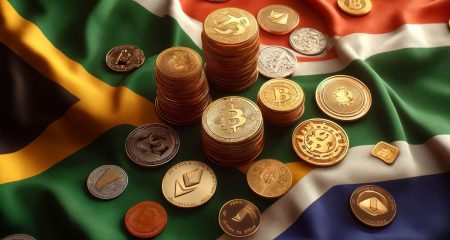
The South African Reserve Bank kept borrowing costs unchanged for a fifth straight meeting even as inflation forecasts worsened.
The Monetary Policy Committee unanimously decided to leave the benchmark repurchase rate at 7%, Governor Lesetja Kganyago told reporters Tuesday in the capital, Pretoria. That’s in line with the forecast of all 24 economists surveyed by Bloomberg.
The key lending rate has remained unchanged since March after the MPC raised it by 200 basis points since 2014 in a bid to limit price growth to between the central bank’s target band of 3% and 6%.
The central bank’s task was complicated by slow economic growth as the nation faced a drought, weak demand from its main export partners and domestic and international political uncertainty.
“The uncertainties related to what a new US president is going to bring, along with regards to ramped-up fiscal policy and what that means for US monetary policy, will provide a few more headaches,” Jeffrey Schultz, an economist at BNP Paribas Securities in Johannesburg, said by phone before the decision.
“I don’t think there is going to be a great deal of pressure from the Reserve Bank to act, bearing in mind that they have already hiked 200 basis points cumulatively since 2014, they have done a lot of the heavy lifting already.”
The economy probably expanded by 0,4% last year, according to the central bank, the lowest since a 2009 recession. The MPC cut its forecast for 2017 to 1,1% from 1,2%.
Inflation is now forecast to return to the target band in the final quarter of this year, and will average 6,2% in 2017 compared with a previous forecast of 5,8%, Kganyago said.
“The inflation forecast of the bank has deteriorated since the previous meeting of the MPC,” he said. “This deterioration is mainly due to changed assumptions regarding international oil prices, the domestic fuel prices and the outlook for food prices, which more than offset the more favorable exchange rate assumption.”
The rand gained almost 13% against the dollar in 2016, even after the currency weakened following the UK’s vote to leave the European Union. That and the election of Donald Trump as US president led to some uncertainty about future capital flows into emerging markets.
“There is still a great deal of uncertainty regarding the policies of the new administration, particularly with respect to the size of the promised fiscal stimulus,” Kganyago said. “While some of the initial optimism has since been tempered somewhat, US growth is expected to be relatively strong, but with some downside risks posed by a stronger dollar.”
Rand advances
The stronger currency may take some pressure off inflation, which accelerated to a 10-month high of 6,8% in December due to surging food prices.
The rand extended gains after Tuesday’s decision, strengthening 1,4% to R13,30/US$ by 3.39pm in Johannesburg. Benchmark government bonds due December 2026 rose, with the yield dropping nine basis points to 8,68%.
While slow economic growth is one of the key factors that rating companies have highlighted as a risk, South Africa avoided a downgrade to non-investment grade last year. S&P Global Ratings and Fitch Ratings kept their assessments of the nation’s foreign-currency debt at one level above junk. Political turmoil, including a police investigation into finance minister Pravin Gordhan, overshadowed the state’s efforts to boost confidence and growth. — (c) 2017 Bloomberg LP




